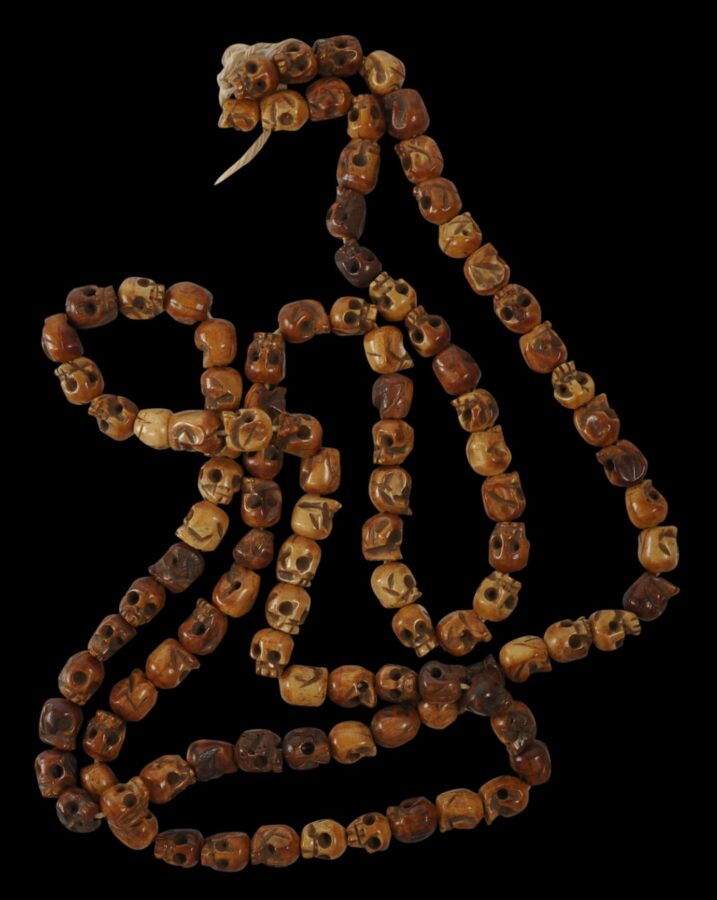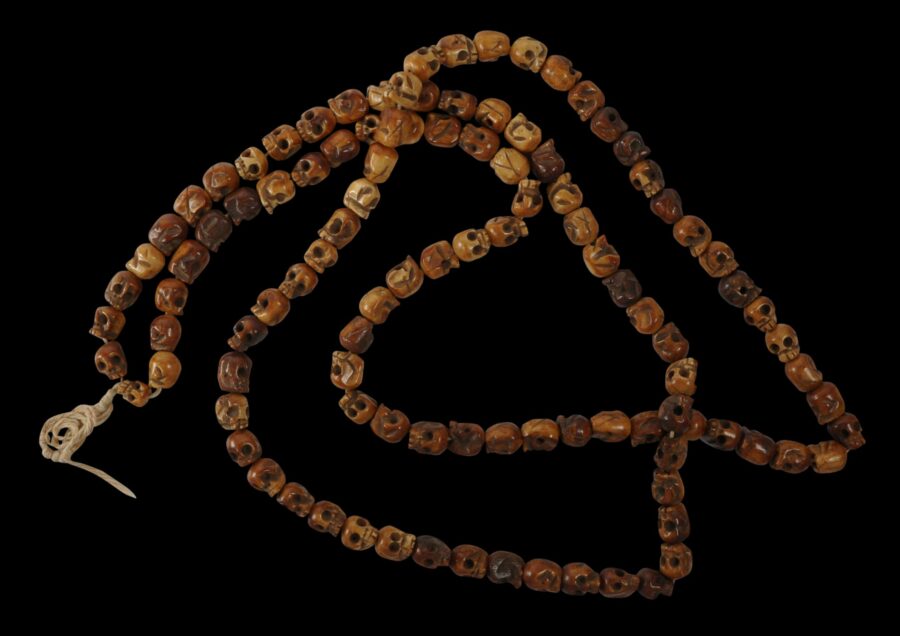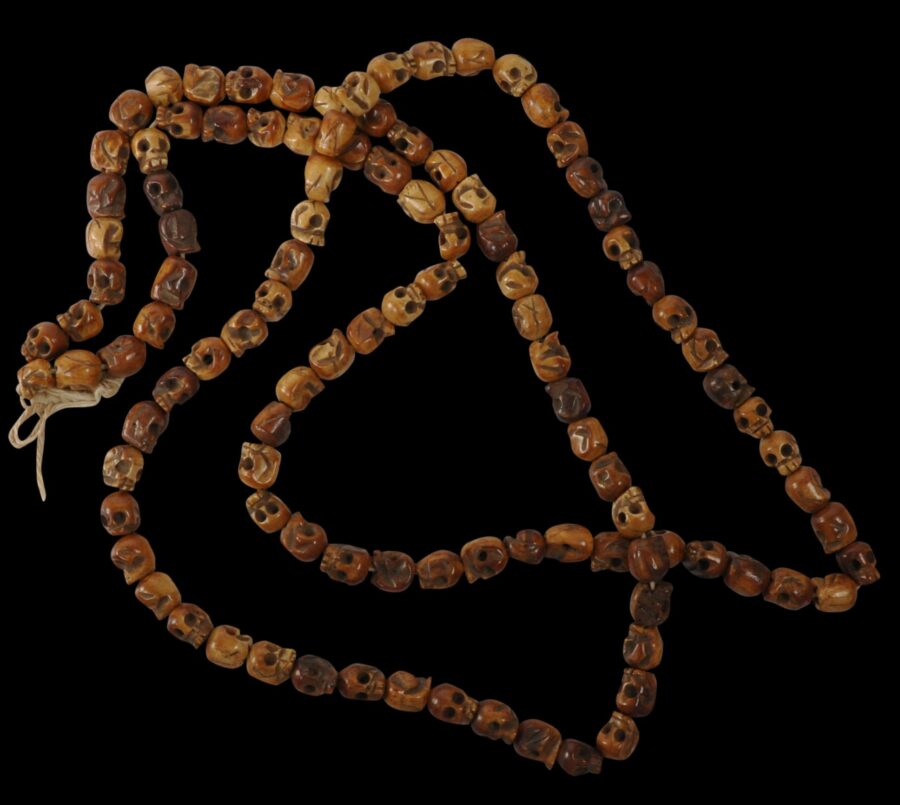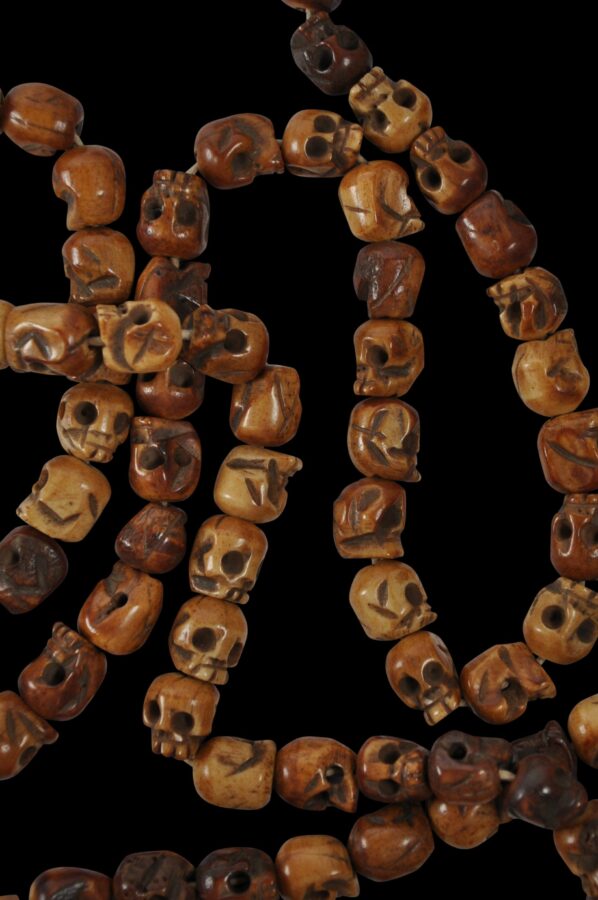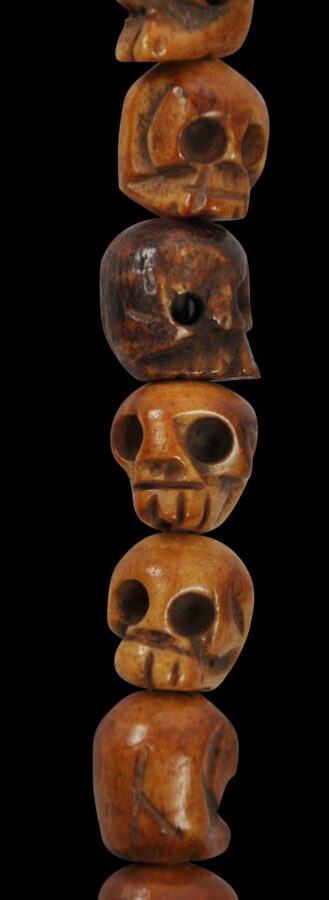This long Tibetan Buddhist rosary (sin-‘phen) is of the finest quality. The patina from age and handling is incontrovertible. Possibly made from human bone, each beads has been carved in the form of a human skull. The material and the form is to signify the the impermanence and illusory nature of life and other phenomena.
It comprises 108 bone beads. Each has been well-carved as a human skull, with the eye sockets carved well and deeply rather than simply being hinted at.
Buddhist rosaries evolved from ancient Hindu-Indian mala prayer beads. In Tibet, they were used by both laymen and monks. Generally, they comprise 108 beads plus others as counters or markers. The main prayer beads were used to count repetitions of prayers.
The set here is in a very fine, stable and wearable condition. Each bead is smooth from wear, and handling, and has a wonderfully glossy and varying patina.
A very similar example is illustrated in Henss (2020, p. 152).
References
Henss, M., Buddhist Ritual Art of Tibet: A Handbook on Ceremonial Objects and Ritual Furnishings in the Tibetan Temple, Arnoldsche, 2020.
Reynolds, V., Tibet: A Lost World: The Newark Museum Collection of Tibetan Art and Ethnology, The American Federation of Arts, 1978.
Sherr Dubin, L., The Worldwide History of Beads, Thames & Hudson, 2009.
Untracht, O., Traditional Jewelry of India, Thames & Hudson, 1997.


